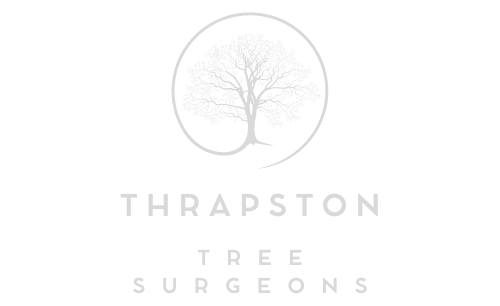Crown Reduction for Trees Close to Buildings
Introduction
When trees grow too close to buildings, they can pose a variety of challenges—from blocked light and overhanging branches to potential structural damage and root intrusion. In areas like Thrapston, where many properties are surrounded by mature trees, managing growth responsibly becomes more than just aesthetic upkeep—it’s a matter of safety and sustainability.
One of the most effective techniques in modern arboriculture for dealing with this issue is crown reduction. At Thrapston Tree Surgeons, we provide expert crown reduction services to help maintain tree health while protecting nearby structures. But this isn’t about hacking back branches—it’s a skilled process that requires experience, precision, and an understanding of tree biology.
Why Crown Reduction Matters Near Buildings
Crown reduction is the careful trimming of the outer branches of a tree to reduce its overall size and spread, particularly the height and width of the crown. When performed by professionals, it ensures trees remain healthy while eliminating risks to nearby buildings.
Potential Issues Caused by Overgrown Trees
Trees located close to homes and commercial buildings can become problematic if not properly maintained. Some common concerns include:
- Branches scraping against windows, roofs, or gutters.
- Excess shade affecting solar panels or garden plants.
- Accumulated debris blocking gutters and drains.
- Risk of falling limbs during storms.
- Structural pressure or damage to walls and foundations.
Without intervention, these problems can escalate, leading to costly repairs and even legal issues if neighbouring properties are affected.
The Value of Precision
Crown reduction is not the same as tree topping (a harmful, outdated practice). It involves selectively removing specific branches while maintaining the natural shape and integrity of the tree. At Thrapston Tree Surgeons, we use industry-best techniques to:
- Retain structural balance and visual appeal.
- Encourage healthy regrowth patterns.
- Reduce wind resistance without compromising stability.
- Comply with local council regulations, especially in conservation areas.
Key Indicators Your Tree Needs Crown Reduction
- Large branches are encroaching on rooflines or windows.
- The tree has outgrown its original planting space.
- Shade from the crown is causing damp conditions near the property.
- You notice cracks or separation in nearby paving or walls.
- The tree has previously been pruned poorly or not at all.
If you spot any of the above, it’s wise to act before minor issues become major concerns.
Benefits of Professional Crown Reduction
A proper crown reduction performed by trained tree surgeons offers several advantages beyond just “making the tree smaller.”
- Improved light access to buildings and gardens.
- Increased airflow around the tree, reducing the risk of disease.
- Reduced pressure on limbs, lowering the risk of snapping.
- Preserved views from windows and balconies.
- Enhanced safety for people and pets below.
Just as importantly, it ensures the long-term viability of the tree. Poorly done reductions can stress trees, weaken their structure, or even lead to their premature decline.
Conclusion
Managing the growth of trees close to buildings is essential for preserving both safety and the natural beauty of your property. Crown reduction is a highly specialised technique that balances the needs of the tree with the demands of its environment. In Thrapston, where homes often sit close to established trees, professional care is key.
At Thrapston Tree Surgeons, we understand the science and strategy behind effective crown reduction. Our team ensures each cut is deliberate, safe, and beneficial in the long run. If you’re noticing branches getting a bit too close for comfort, it might be time to schedule a professional assessment. Let us help you protect your property while keeping your trees healthy and thriving.
Call us on: 01832 770 681
Click here to find out more about Thrapston Tree Surgeons
Click here to complete our contact form and see how we can help with your tree needs.

